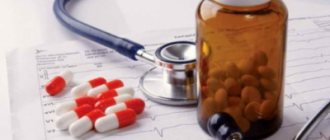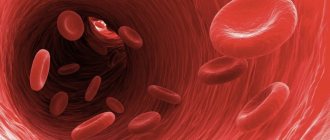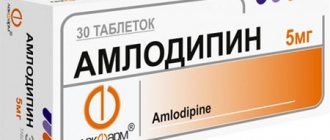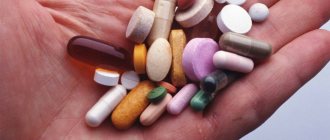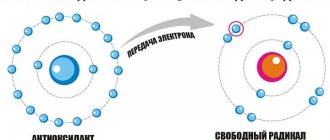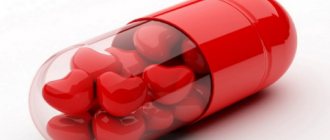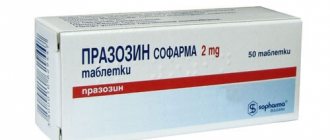The quality of a person’s life largely depends on how well his brain works. But the brain, like any other tissue of the human body, is subject to aging and damaging factors. Therefore, medicine strives to create drugs that will prolong the full life of the brain and, accordingly, the person. This group of drugs includes neuroprotectors - substances that protect brain cells from various types of influences and damage. Modern neuroprotectors, their range of applications and features of use will be discussed in this article.
There is probably not a single person in the world who, at least once in his life, has not in one way or another encountered the need to take neuroprotectors. Vascular pathology (stroke, dyscirculatory encephalopathies), traumatic brain injuries, neuroinfections and their consequences, neurodegenerative diseases (Parkinson's disease, Alzheimer's and others), vegetative-vascular dystonia, periods of increased mental stress - all this is not a complete list of conditions that require use neuroprotectors.
Neuroprotectors are substances that can help neurons resist damaging factors. This means that the brain cells remain “alive” and continue to perform their function. Neuroprotection is carried out in two ways:
- interrupting the rapid mechanisms of cell destruction. This is called primary neuroprotection;
- reducing the severity of long-term consequences of damage (impact on the processes of lipid peroxidation, blockade of inflammatory substances, normalization of metabolism, and so on). These phenomena are referred to as secondary neuroprotection.
The mechanisms of both types of neuroprotection are quite complex and occur at the biochemical level. But the main thing is the result: recovery or a significant reduction in the manifestations of the disease. Neuroprotectors can improve memory, attention, thinking, and restore strength and sensitivity in the limbs.
Due to the fact that the mechanisms of neuroprotection are very complex, there are quite a lot of drugs used for this purpose. They are difficult to classify because they have a completely different chemical nature (these are plant extracts, proteins, amino and hydroxy acids, and so on). In order to somehow understand the abundance of neuroprotectors that currently exist, we will try to divide them into the following groups:
- neuropeptides and protein drugs (Cerebrolysin, Actovegin, Cortexin);
- drugs of various chemical groups (Piracetam, Phenotropil, Encephabol, Gliatilin, Pantocalcin, Glycine, Phenibut, Citicoline, Picamilon, Semax and others);
- antioxidants (Mexidol, Cytoflavin);
- agents affecting blood flow (Cavinton, Oksibral, Sermion, Cinnarizine, Trental);
- herbal preparations (Ginkgo biloba extract).
Now let's look at each group in more detail.
Neuropeptides and protein drugs
Neuroprotectors are substances that help neurons resist damaging factors and improve their functions.
Cerebrolysin is a biologically active peptide from the pig brain. It is characterized by both primary and secondary neuroprotection. Effective for a wide variety of brain diseases. Approved for use in children. The drug can only be used parenterally (intramuscularly or intravenously) in a dose of 1 ml to 60 ml per day. Duration of application ranges from 10 to 30 days, courses can be repeated. Cerebrolysin has only two contraindications: acute renal failure and status epilepticus.
Actovegin is created on the basis of calf blood. It has a wider spectrum of action than just neuroprotection. This is possible due to the drug’s ability to increase the absorption of glucose and oxygen by any cells in the body. As a neuroprotector, it is most often prescribed for vascular diseases of the brain (stroke, dyscirculatory encephalopathy), and traumatic brain injuries. It is used intramuscularly (no more than 5 ml), intravenously, intravenously during the first 2-4 weeks from the onset of the disease, and then therapy continues in the form of tablets. This continuous course of treatment allows for maximum restoration of impaired nerve cell functions.
Cortexin is a complex of protein fractions isolated from the brain of pigs and cattle. This is a very good neuroprotector with excellent tolerability. Approved for use by both adults and children. Courses of treatment are quite short - 10 days each, which can be repeated after 1-6 months if necessary. The only drawback can be considered the fact that Cortexin can only be used intramuscularly (there are no other forms of release yet).
Oxidative stress
Increased levels of oxidative stress may be caused in part by neuroinflammation, which is a highly recognized part of cerebral ischemia, as well as many neurodegenerative diseases including Parkinson's disease, Alzheimer's disease and amyotrophic lateral sclerosis. Elevated levels of oxidative stress are widely targeted in neuroprotective treatments due to their role in inducing neuron apoptosis.
Oxidative stress can directly cause neuronal cell death, or it can trigger a cascade of events that leads to protein misfolding, proteasomal malfunction, mitochondrial dysfunction, or glial cell activation. If one of these events is triggered, further neurodegradation is caused as each of these events causes neuronal cell apoptosis. By reducing oxidative stress through neuroprotective treatments, additional neurodegradation can be suppressed.
Antioxidants
Antioxidants are the primary treatment used to manage oxidative stress levels. Antioxidants work to eliminate reactive oxygen species, which are the main cause of neurodegradation. The effectiveness of antioxidants in preventing further neurodegradation is not limited to disease but may also vary by gender, ethnicity, and age.
- Acetylcysteine: It targets a wide range of german factors in the pathophysiology of numerous neuropsychiatric disorders including glutamatergic transmission, the antioxidant glutathione, neurotrophins, apoptosis, mitochondrial function, and inflammatory pathways.
- Crocin: Derived from saffron, crocin has been shown to be a potent neuronal antioxidant.
- Estrogen: 17α-estradiol and 17β-estradiol have been shown to be effective as antioxidants. The potential of these drugs is enormous. 17α-estradiol is a nonstrogenic stereoisomer of 17b-estradiol. Efficiency 17 {amp}amp; alpha ; -estradiol is important because it shows that the mechanism depends on the presence of a specific hydroxyl group, but is independent of estrogen receptor activation. This means that more antioxidants can be designed with bulky side chains so that they do not bind to the receptor but still have antioxidant properties.
- Fish oil: It contains N-3 polyunsaturated fatty acids, which are known to compensate for oxidative stress and mitochondrial dysfunction. It has high potential for neuroprotection and many studies are being conducted looking at effects in neurodegenerative diseases
- Minocycline: Minocycline is a semisynthetic tetracycline that is able to cross the blood-brain barrier. It is known to be a strong antioxidant and has broad anti-inflammatory properties. Minocyline has been shown to have neuroprotective activity in the CNS in Huntington's disease, Parkinson's disease, Alzheimer's disease and ALS.
- PQQ: Pyrroloquinoline quinone (PQQ) as an antioxidant has several modes of neuroprotection.
- Resveratrol: Resveratrol prevents oxidative stress by attenuating hydrogen peroxide-induced cytotoxicity and intracellular ROS accumulation. It has been shown to have a protective effect on several neurological disorders including Alzheimer's disease, Parkinson's disease, multiple sclerosis and ALS, as well as cerebral ischemia.
- Vinpocetine: Vinpocetine exerts neuroprotective effects in cerebral ischemia through actions on cation channels, glutamate receptors and other pathways. The drop in dopamine production by vinpocetine may contribute to its protective effect against oxidative damage, particularly in dopamine-rich structures. Vinpocetine, as a unique anti-inflammatory agent, may be useful for the treatment of neuroinflammatory diseases. This increases cerebral blood flow and oxygen saturation.
- THC: delta 9-tetrahydrocannabinol exerts neuroprotective and antioxidant effects by inhibiting NMDA neurotoxicity in neuronal cultures exposed to toxic levels of the neurotransmitter glutamate.
- Vitamin E: Vitamin E has had different responses as an antioxidant depending on the neurodegenerative disease that it is being treated for. It is most effective in Alzheimer's disease and has been shown to have equivocal neuroprotective effects in the treatment of ALS. A meta-analysis involving 135,967 participants found there was a significant association between vitamin E dosage and all-cause mortality, with doses equal to or greater than 400 IU per day showing an increase in all-cause mortality. However, there is a reduction in all-cause mortality at lower doses, with the optimal time being 150 IU per day. Vitamin E is ineffective for neuroprotection in Parkinson's disease.
Preparations of various chemical groups
Piracetam is one of the first representatives of the class of neuroprotectors. It has been used for a very long time, however, it has not lost its significance even today. The drug is prescribed to both children and adults, both orally and parenterally. One of the necessary conditions for effective treatment with this drug is compliance with sufficiently high doses. For an adult, the average dose is 2.4 g per day, divided into 3 doses. The drug does not work from the first day of use, so treatment courses are usually long - 1-3 months. Absolutely identical drugs in composition are Nootropil, Memotropil, Lutsetam.
Phenotropil is a neuroprotector with an almost immediate effect. This means that its effect is felt after just a single dose. The ability to remember, concentrate, speed of thinking - all these processes are significantly accelerated. Phenotropil improves mood and increases the body's resistance to stress. The method of application is convenient: 100 mg in the morning after meals for an average of 30 days. After a month, the course can be repeated. There are currently no complete analogues of the drug.
Encephabol is one of the few neuroprotectors approved for use from birth (for this there is a release form in the form of a suspension). It is prescribed primarily for disorders of thinking, memory, mental retardation, and in the elderly for dementia syndrome. A noticeable effect is achieved with long-term use (usually at least 2 months). The drug must be taken during daylight hours as it can cause sleep disturbances. Doses and dosage regimen are selected individually. Side effects are extremely rare.
Gliatilin (choline alcerophosphate) is a precursor substance to acetylcholine (one of the main substances transmitting impulses in the nervous system) and phospholipids, from which the membranes of nerve cells are built. Complete analogues of Gliatilin are Cereton and Cerepro. Indicated for the treatment of acute conditions (stroke, traumatic brain injury) and chronic processes (encephalopathy of various origins, cognitive impairment, consequences of traumatic brain injury). In acute conditions, parenteral use is necessary at a dose of 1 g per day intravenously or intramuscularly for up to two weeks, followed by a transition to taking capsules at a dose of 1.2 g per day. Chronic processes are treated with 400 mg 3 times a day for 3-6 months.
Pantocalcin increases the brain's resistance to oxygen starvation and the effects of toxic substances. The drug has an anticonvulsant effect, due to which it is successfully used in people with consequences of traumatic brain injury in the form of convulsive syndrome, when other neuroprotectors are contraindicated. Works for tics, stuttering, urinary incontinence, behavioral disorders with attention deficit hyperactivity disorder. For the treatment of adults it is available in the form of tablets of 250 mg and 500 mg, and for children there is 10% Pantogam syrup (approved for use from the first days of life). The drug must be taken in the morning and afternoon.
Glycine is a natural aminoacetic acid in our body that improves metabolism in the brain. From the blood it easily and quickly penetrates into the brain cells. The drug is able to reduce psycho-emotional stress and has antioxidant and antitoxic effects. Due to its interaction with glutamate receptors, it is indicated in the first hours of a stroke as an emergency treatment (at a dose of 1 gram once). Glycine must be taken under the tongue, that is, dissolved until completely dissolved in the oral cavity. It has a good safety profile due to the fact that it is already present in the human body. Therefore, Glycine is also safely used in pediatrics.
Phenibut is a neuroprotector with a sedative effect. Thanks to the latter, the drug is used for anxiety and sleep disorders. The drug stimulates memory, learning ability, increases physical performance, and reduces dizziness. Available in the form of tablets and capsules of 250 mg. A complete analogue of the drug is Noofen, produced in Latvia. For children, there is Anvifen - this is the same Phenibut, but in a much smaller dosage (capsules of 25, 50 and 125 mg). For children, the drug can help with tics, urinary incontinence and stuttering, and to prevent motion sickness.
Citicoline is effective in the treatment of thinking disorders, motor and sensory disorders of a vascular nature. Capable of primary and secondary neuroprotection. Included in modern protocols for the treatment of ischemic strokes. It has no less effect on traumatic brain injuries. The more severe the disease, the greater the dose of the drug the patient needs. So, for a stroke, the required daily dose is 2 g during the first 2-3 weeks in the form of an intravenous infusion. Then you need to continue taking the drug orally for several months. Although the drug can be used intramuscularly, intravenous and oral use is more preferable. Complete analogues of the drug are Ceraxon and Recognan.
Picamilon is a long-known corrector of cerebral circulatory disorders. This is an inexpensive but effective neuroprotector in tablet form. Used for ischemic strokes (at different periods), for vegetative-vascular dystonia, migraines, traumatic brain injuries, neuroinfections and their consequences, alcoholism. The average period of use is 1-1.5 months. Complete analogues of the drug are Pikogam, Picanoyl, Amylonosar.
Semax is perhaps currently the only neuroprotector with an intranasal route of administration, which ensures absorption of up to 70% of the drug. In addition to neuroprotective effects, it has antioxidant, antihypoxic and neurotrophic effects. The mechanism of action is unique, which is associated with its chemical formula (an analogue of the natural hormone ACTH, but devoid of hormonal activity). Semax has a wide range of applications: stroke, chronic circulatory disorders, post-traumatic encephalopathy, the effects of anesthesia, increasing the adaptive capabilities of the brain under stress, and more. Approved for use in children over 5 years of age. A special feature of the application are fairly short courses - from 7 to 14 days (on average).
Neuroprotectors list of drugs for stroke, osteochondrosis, epilepsy, parkinson's
» Latest methods
Neuroprotection - protecting nerve cells from damage by free radicals and toxins, from oxygen deficiency and other adverse factors.
There are two types of neuroprotection: primary and secondary.
The main direction of primary neuroprotection is to interrupt the fast mechanisms of the glutamate-calcium cascade in order to correct the imbalance of excitatory and inhibitory neurotransmitter systems and activate natural inhibitory processes.
This type of neuroprotection should begin from the first minutes of ischemia and continue throughout the first three days of stroke, especially active in the first 12 hours. NMDA receptor antagonists reduce the flow of Ca2+ ions into cells through agonist-dependent calcium channels.
They were the first neuroprotective drugs that, under experimental conditions, significantly (by 40-70%) limited the area of cerebral infarction, primarily by preserving the living zone of the “ischemic penumbra.” Receptor blockade can be carried out by non-competitive antagonists.
The only safe and (according to the results of phase 2 trials) effective non-competitive antagonists of NMDA receptors today are magnesium preparations, which regulate calcium current through voltage-sensitive channels.
With cerebral ischemia, the content of glutamate receptors in the cortex decreases, which causes overexcitation or even death of neurons, since the loss of these AMPA subunits by glutamate receptors leads to an increase in the permeability of the neuron membrane for calcium ions and a decrease in the mitochondrial pool of magnesium ions, as well as an increase in the level of free cytosolic magnesium in a neuron is a recognized marker of apoptosis induction. At rest, the mouth of the AMPA receptor is blocked by magnesium ions. During ischemia, the AMPA receptor loses magnesium ions from the mouth and does not interfere with the increased flow of zinc ions and is also deprived of the metal. In addition, magnesium as a microelement is involved in the formation of catalytic centers and stabilization of regulatory sites in the composition of numerous enzymes of nervous and glial tissue in the process of synthesis and degradation of neurotransmitters and neuropeptides in the brain in the formation of the spatial configuration and intramolecular stabilization of endorphins, hypothalamic releasing factors - substance P, neuropeptide Y. Magnesium is involved in various antioxidant functions of glial neurons.
Nootropics
This subgroup of drugs enhances metabolic processes in nerve tissues and helps eliminate nerve and mental disorders.
Such neurotropic drugs help prolong life and rejuvenate the body. Also, they have a positive effect on intellectual activity (memory, learning, mental activity, etc.).
Such neurostimulators are used to treat patients with problems in the field of neuralgia.
For rehabilitation of stroke and heart attack, treatment of patients with epilepsy or Alzheimer's disease (the most common form of dementia).
The list of drugs in this group contains substances that help protect the brain from damage and stimulate nerve cells, affecting their restoration to the level of healthy people.
Most Common Nootropics
Piracetam is the most common drug that has a neuroprotective effect. It has found its greatest application in the treatment of diseases of the nerves and psyche.
The drug is prescribed to patients recovering from acute oxygen deprivation of the brain. Also, Piracetam is the first patented drug that has a neuroprotective effect. It has been proven to effectively improve intellectual performance and memory.
Phenibut is prescribed for general weakness, neuroses, sleep disorders and deviations in the normal functioning of the vestibular apparatus. The interaction of Phenibut helps children overcome stuttering and various tics.
This drug normalizes metabolism, stimulates mental processes (memory, attention, etc.), and also has an antioxidant effect. Semax is a complex that consists of neuropeptides
The drug is quite effective and is similar to adrenocorticoid hormone, but does not affect the functioning of the adrenal glands and is not a hormonal agent
Semax is a complex that consists of neuropeptides. The drug is quite effective and is similar to adrenocorticoid hormone, but does not affect the functioning of the adrenal glands and is not a hormonal agent.
Phezam is a nootropic prescribed in combination with other drugs for problems with blood circulation in the brain cavity. This drug eliminates the effects of oxygen starvation, helps against headaches, migraines, dizziness and memory loss.
Picamilon helps improve blood circulation in the brain and stimulate metabolic processes. These neuroprotectors have tranquilizer properties, fight oxygen starvation, oxidation processes, and retain antiplatelet properties.
Providing such a range of actions, Picamilon does not depress the central nervous system and does not cause fatigue and drowsiness.
Cerebrolysin is a nootropic (neuroprotector) used in combination with other medications. Cerebrolysin is a partially degraded whey protein. This drug has passed all tests and confirmed its safety and effectiveness.
Stimulates mental activity and improves mood.
Neuroprotective drugs
Neuroprotectors
– these are medications whose action is aimed at protecting nerve cells from pathogenic factors. They eliminate or reduce pathophysiological and biochemical disorders in nerve cells.
Neuroprotectors protect, improve and adapt brain structures to the negative effects of stroke. Neuroprotectors also help reduce the development of severe and irreversible neuronal damage. It is worth noting that the prescription of these drugs is one of the most effective methods of treating patients with insufficient blood circulation to the brain.
Classification of neuroprotectors
According to their mechanism of action, neuroprotectors are divided into several groups:
- nootropic drugs;
- antioxidant drugs;
- drugs that improve blood circulation in the brain;
- drugs with combined effects;
- adaptogens.
List of neuroprotective drugs
Here is a list of drugs for each group of similar drugs:
1. Nootropic drugs:
2. Antioxidants:
- Mexidol;
- Mexico;
- Emoxilin;
- Quercetin;
- Corvitin;
- Flacumin;
- Glycine;
- Glutamine;
- Niacin;
- Complamin;
- Thiotriazolin;
- Neurovitan;
- Neuron;
- Neuronorm;
- Neurorubin;
- Cytoflvin.
3. Drugs that improve blood circulation in the brain:
- Tiklid;
- Clopidogrel;
- Sinkumar;
- Warfarin;
- Phenilin;
- Cinnarizine (Stugeron);
- Nimodipine (Nimoton);
- Nitsergolin (Simeon);
- Vinpocetine (Cavinton);
- Vincamine (Oxybral);
- Trental;
- Agapurin;
- Complamin.
4. Drugs with combined effects:
5. Adaptogens:
- tincture of Eleutherococcus;
- liquid ginseng extract;
- tincture of Chinese lemongrass.
You can also add homeopathic medicines such as Cerebrum Compositum and Memoria to the list of neuroprotectors.
Neuroprotectors side effects of known drugs
Neuroprotectors are drugs that improve metabolic processes and blood circulation in the vessels of the brain. They can be divided into several groups.
- : Nootropics piracetam, nootropil;
- Amino acid and peptidergic: actovegin, cerebrolysin;
- Acetylcholinergic: galantamine, rivastigmine, donepizil;
- Glutamatergic and NMDA receptor antagonists: memantine, akatinol;
- 3-hydroxypyridine derivatives: mexidol;
- Preparations based on herbal components, which are also used for vascular diseases of the brain. First of all, these are medicines and dietary supplements based on extracts of the relict plant Ginkgo biloba, which grows in China. Today such products are popular both in Russia and abroad. The leaders in popularity are: “Tanakan” and “Bilobil”.
Despite the popularity of such products, there is evidence that they can pose a danger. In 2009, studies were conducted in Germany on medications containing gingo extracts.
A scientist from the city of Bonn, Eckhart Leistner, came to the conclusion that such drugs often cause seizures, and this threatens the health of patients with epilepsy. In his opinion, the side effect is caused by the substance gingotoxin contained in the leaves of the plant.
The results of these studies were published in a major publication, the Journal of Natural Products.
Russian researchers are also studying neuroprotectors and have expressed concern about the harmful effects of some drugs. Thus, in the book “Phytopsychorehabilitation under stress” by Doctor of Medical Sciences V.F. Korsun says that “Tanakan”, “Tabakan”, “Memoplat”, “Bilobil” can cause dementia of the venous vessels of the brain. It also states that the drug “Emoxipin” can increase blood pressure.
Antioxidants
Mexidol increases concentration and improves memory
Mexidol increases the adaptive capabilities of brain cells under conditions of ischemic and toxic influences, and prevents deterioration of blood flow during strokes. Due to its diverse influence, it improves memory, facilitates learning processes, increases concentration and performance. Indicated for patients with acute cerebrovascular accidents, discirculatory encephalopathies, vegetative-vascular dystonia, traumatic brain injuries in various periods, and for anxiety disorders. The drug has several forms of release, which allows you to switch from parenteral forms to oral administration. Course application takes on average 1-2 months. The dosage and mode of application are selected individually. Since there have been no clinical studies of the safety of this drug in children, it is not yet used in pediatrics. There are quite a few analogues of Mexidol: Mexicor, Neurox, Mexifin, Medomexi, Mexiprim.
Cytoflavin is a combination preparation containing succinic acid, inosine and riboflavin mononucleotide. Thanks to this composition, it helps improve oxygen absorption, restores the action of enzymes, which ensures the fight against free radicals, enhances the synthesis of substances inside nerve cells, and improves cerebral blood flow. All this, first of all, has a positive effect on the cognitive-mnestic functions of the brain and quality of life. The drug is prescribed as part of complex therapy for strokes, various types of encephalopathies, and asthenic syndrome. Acute conditions require intravenous drip administration of the drug (10-20 ml per day); for chronic processes, tablets are prescribed for 1-2 months.
Drugs that affect the metabolism of nervous tissue (including the brain)
The drug dosage regimen should be drawn up exclusively by a specialist (your attending physician), who can correctly adjust it taking into account the form and severity of a particular disease. If we are talking about vascular dementia, the drug is recommended to be used twice a day, thirty milligrams. If there are any circulatory disorders of other organs, you should take ten milligrams three times a day.
Patients who suffer from gout or hyperurecemia should be especially careful when taking the drug in question. In this case, therapy should take place exclusively under the constant supervision of the attending physician, who will be able to provide the necessary assistance and correctly adjust the treatment regimen.
The substance should be stored in a dark, dry place at room temperature (tablets) or in the refrigerator (ampoules). The permissible shelf life of the drug is three years. After this point it is prohibited to use it. It is important to remember that the choice of a specific drug, determination of the appropriate dosage and development of a treatment regimen must be entrusted to a specialist.
In Russia, approximately 400-450 thousand strokes are registered per year, the structure of which is dominated by ischemic ones - 75-85%. It has no contraindications during lactation. The drug is produced in adult and pediatric dosages: 0.05 g and 0.02 g, respectively.
The main mechanisms: activation of aerobic (with the help of oxygen) breakdown of glucose (glycolysis), increased ATP synthesis to enhance energy processes in the cell, hence an increase in the transport and accumulation of glucose and oxygen in cells for anabolic (regenerative) processes. The rate and degree of peroxidation (destruction) of cell membrane lipids also decreases.
This class of pharmacological drugs includes: Actovegin, Pentoxifylline (Trental), Mexidol (Mexidol), Vinpocetine (Cavinton), Gingko Biloba (Memoplant), Nootropil (Piracetam).
Drugs affecting blood flow
Cavinton (Vinpocetine) provides neuroprotection through a selective increase in cerebral blood flow. Moreover, increased blood flow occurs in the area that requires it most (in the area affected by ischemia). Indicated primarily for patients with cerebrovascular insufficiency as a result of strokes, cerebral atherosclerosis, dizziness of various origins, and tinnitus. The drug is prescribed intravenously or in tablet form. The course of treatment is at least a month. The drug is usually well tolerated by patients. It should be used with caution in people with cardiac arrhythmias.
Oxybral reduces cerebral vascular resistance, thereby increasing the flow of nutrients to neurons. Increased oxygen uptake by brain cells is accompanied by improved memory and intellectual functions. The drug can be used intravenously, intramuscularly and orally - in the form of syrup or capsules. Oksibral is approved for use in children over 6 years of age. The course of treatment is on average 2 months.
Sermion (Nicergoline) increases blood flow, reduces platelet aggregation, improves the transmission of impulses between neurons, which determines the neuroprotective effect. For use in adults only. Able to slightly reduce blood pressure. It is mainly prescribed to patients with cerebral atherosclerosis and hypertension with encephalopathy that has developed against this background. It has several forms of release (for parenteral administration and oral use), which ensures continuity in treatment.
Cinnarizine reduces the tone of the smooth muscle cells that make up small arteries, due to which the vessels dilate and more blood flows to the tissues. This effect develops not only in the vessels carrying cerebral blood flow, but also in the vessels of the heart and limbs. Therefore, the drug is indicated for patients with generalized atherosclerosis, intermittent claudication, trophic disorders in the limbs, and not only with discirculatory encephalopathies, consequences of strokes, dizziness and tinnitus. The drug is not used in patients with parkinsonism, since it increases the manifestations of this disease. There are combinations of Cinnarizine with Piracetam (Phesam).
Trental (Pentoxifylline) is able to dilate small vessels and reduce blood viscosity, preventing the gluing of some blood elements. Thanks to this, blood flow in the vessels of the brain, lower extremities, eyes and ears is normalized. You should know that in case of hemorrhage in the brain, the drug is contraindicated (and when treating its consequences, it is allowed). The drug is administered either intravenously by slow drip or orally in tablets. The timing of use and dose are very individual.
Herbal preparations
Preparations based on Ginkgo biloba extract not only have a neuroprotective effect, but also improve peripheral blood circulation.
Ginkgo biloba extract (Ginkoum, Memoplant, Bilobil, Tanakan) has established itself as a drug with excellent tolerability, that is, it very rarely causes side effects. The neuroprotective effect is combined with improved blood flow in the extremities. One of the disadvantages of use is the rather long courses of treatment: from 2 months to 6.
As this review of neuroprotective agents shows, there are many such drugs. This article contains information only about the most common of them. Each neuroprotector has its own specific mechanism of action, effect on brain metabolism, timing and methods of application. Thanks to this, treating doctors have the opportunity to have a differentiated approach to the treatment of certain diseases.
